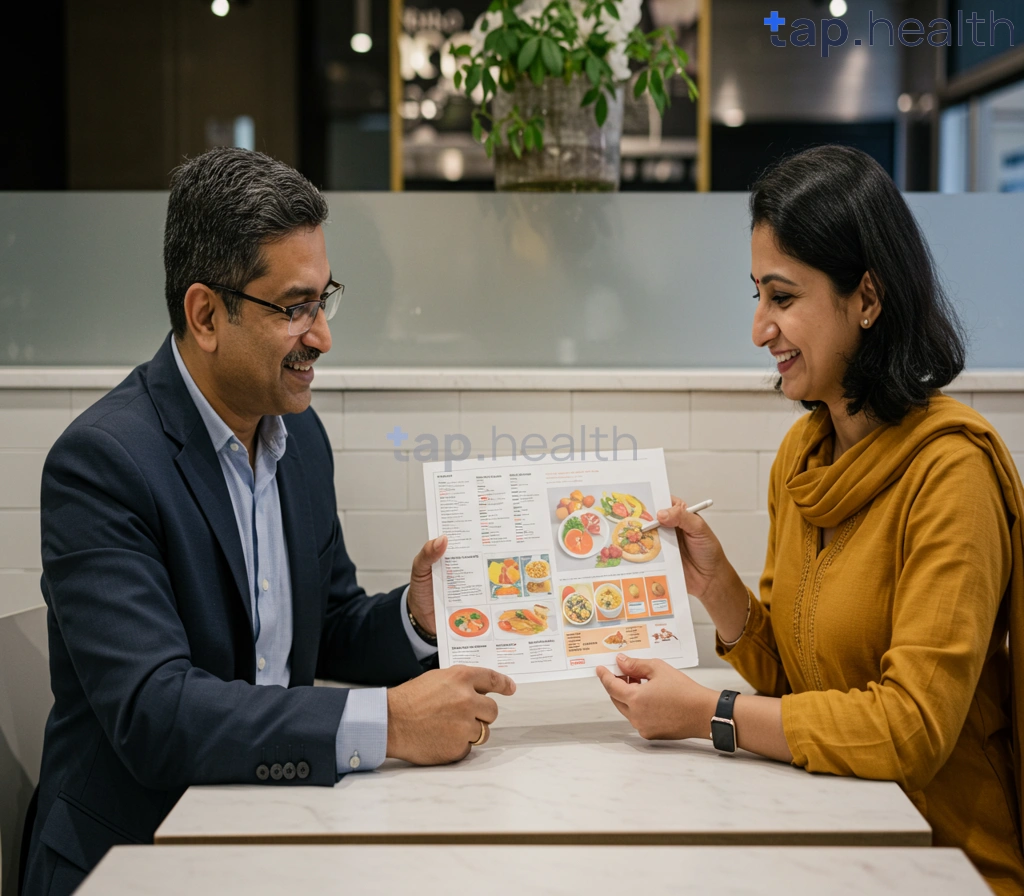Table of Contents
- Improving Diabetes Management Through Nutrition Education
- Understanding Food Access Barriers in Diabetes Care
- Nutrition Education Programs: A Guide to Better Diabetes Management
- Combating Diabetes: The Role of Food Access and Nutrition
- Effective Strategies for Diabetes Management: Nutrition and Accessibility
- Frequently Asked Questions
- References
Are you ready to unravel the complex interplay between nutrition education, food access, and effective diabetes management? This blog post delves into a comprehensive study exploring these crucial interconnected areas. We’ll examine how improving access to nutritious food and providing effective nutrition education can significantly impact diabetes control and overall health outcomes. Understanding these connections is key to empowering individuals and communities to manage their diabetes effectively. Let’s dive in and explore the findings!
Improving Diabetes Management Through Nutrition Education
Diabetes is a growing concern globally, particularly impacting the working-age population. Statistics reveal that a significant portion—61%—of individuals with diabetes are aged between 20 and 64 years, highlighting the urgent need for effective management strategies, especially in resource-constrained settings common across many Indian and tropical countries. Data from the International Diabetes Federation supports this alarming trend. Effective nutrition education is paramount in tackling this challenge.
Addressing Nutritional Challenges in Tropical Climates
Many Indian and tropical countries face unique nutritional challenges. Limited access to fresh produce, reliance on processed foods, and cultural dietary habits can exacerbate diabetes risk. Nutrition education programs must address these specific issues. For instance, promoting locally sourced, affordable fruits and vegetables, and educating on traditional cooking methods that minimize added sugars and unhealthy fats, are crucial. Practical workshops and community-based initiatives can significantly improve dietary adherence.
Empowering Individuals Through Knowledge
Effective diabetes management hinges on empowering individuals with the knowledge to make informed food choices. This includes understanding carbohydrate counting, portion control, and the glycemic index of foods. Simple, culturally relevant educational materials, available in local languages, are essential for widespread impact. Furthermore, incorporating traditional medicinal practices, where appropriate and evidence-based, can enhance compliance and overall well-being. For those facing the challenges of aging with diabetes, Managing Diabetes as You Age: Challenges and Solutions offers valuable insights.
A Call to Action for Improved Diabetes Management
In Indian and tropical countries, where a large proportion of the population is affected by diabetes, a multi-pronged approach is needed. Let’s prioritize accessible nutrition education programs tailored to specific regional contexts, incorporating culturally sensitive strategies and focusing on practical solutions to improve diabetes management and improve the health outcomes of millions. Initiating community-based nutrition programs is a crucial step towards a healthier future. The positive impact of comprehensive diabetes education is further explored in How Diabetes Education Enhances Health Outcomes – Tap Health.
Understanding Food Access Barriers in Diabetes Care
The prevalence of Type 2 diabetes, significantly impacted by insulin resistance (over 80% of cases), is escalating globally, particularly in Indian and tropical countries. Effective diabetes management hinges not only on medication and lifestyle changes but crucially, on consistent access to nutritious food. However, significant barriers impede this access for many, hindering successful disease management and contributing to poorer health outcomes.
Socioeconomic Factors & Food Insecurity
Poverty and food insecurity are primary obstacles. Many individuals, particularly in rural areas of India and other tropical nations, lack consistent access to fresh produce, lean proteins, and whole grains – essential components of a diabetes-friendly diet. Instead, they often rely on inexpensive, energy-dense, processed foods high in refined carbohydrates and unhealthy fats, directly exacerbating insulin resistance and worsening glycemic control. This limited access is further compounded by issues such as poor infrastructure, limited transportation, and seasonal variations in food availability. Understanding the importance of Nutrient Density in Diabetic Meal Plans: Prioritizing Quality Foods is crucial in overcoming these challenges.
Geographical Challenges & Cultural Influences
Geographical location also plays a critical role. Remote villages often lack supermarkets or well-stocked markets, forcing reliance on limited, less healthy options. Cultural dietary traditions may also present challenges; certain culturally significant foods, while delicious, might not align with diabetes-friendly dietary guidelines. Educating communities about culturally appropriate substitutions and modifications is crucial.
Actionable Steps for Improved Access
Addressing these barriers requires a multi-pronged approach. Governments and NGOs need to invest in improving food infrastructure, supporting local farmers’ markets, and implementing nutrition education programs tailored to regional contexts. Furthermore, initiatives promoting affordable access to healthy foods through subsidized programs or community gardens can significantly impact diabetes management in these regions. Empowering individuals with knowledge and resources is key to overcoming these challenges and improving diabetes outcomes. It’s also important to consider the role of supplements, but always in consultation with a healthcare professional. For more information, see our blog on Safe and Effective Dietary Supplements for Diabetes Care.
Nutrition Education Programs: A Guide to Better Diabetes Management
Understanding the Challenge in Indian and Tropical Countries
Diabetes is a growing concern globally, and the impact is particularly significant in Indian and tropical countries. While precise data for these regions may vary, the alarming statistic from the U.S. CDC showing that approximately 35 per 10,000 U.S. youths have diagnosed diabetes (source) highlights the urgent need for effective preventative measures and management strategies worldwide. These regions often face unique challenges, including limited access to healthcare and nutritious food, coupled with changing dietary habits and lifestyles. Effective nutrition education programs are crucial to address this escalating health crisis.
Tailoring Nutrition Education for Impact
Successful diabetes management hinges on comprehensive nutrition education. Programs must be culturally sensitive and account for the prevalent food systems and dietary traditions in Indian and tropical countries. This involves promoting locally sourced, whole foods and emphasizing traditional cooking methods that minimize processed ingredients and added sugars. Practical, hands-on workshops, community-based initiatives, and the utilization of local languages are essential for effective knowledge transfer and behavioral change. Furthermore, integrating diabetes management into existing healthcare infrastructure and community health worker programs is critical for widespread reach and sustainability. For more specific strategies, see our guide on 10 Proven Tips for Effective Diabetes Management.
Empowering Communities Through Actionable Steps
Effective nutrition education isn’t merely about disseminating information; it’s about empowering individuals and communities to make informed choices. This includes providing practical guidance on: portion control, meal planning, label reading, and incorporating regular physical activity. The focus should be on creating sustainable lifestyle modifications, rather than imposing restrictive diets that are difficult to maintain long-term. By understanding the link between diabetes and obesity, you can better tailor your approach. Check out our blog on Understanding the Link Between Diabetes and Obesity for more information. By collaborating with local organizations, healthcare providers, and community leaders, we can ensure that these programs are accessible, relevant, and effective in combatting the rising prevalence of diabetes in these crucial regions.
Combating Diabetes: The Role of Food Access and Nutrition
The global burden of diabetes is staggering, with over 75% of those affected residing in low- and middle-income countries, as highlighted by the International Diabetes Federation. This stark reality is particularly pertinent in Indian and tropical countries, where unique challenges related to food access and nutrition significantly impact diabetes management. Limited access to fresh produce, coupled with the prevalence of processed foods high in sugar and unhealthy fats, creates a vicious cycle contributing to the disease’s high prevalence. Choosing the right foods is crucial, and you can learn more about excellent dietary choices in our article on 20 Best Foods for People with Diabetes – Tap Health.
Nutritional Challenges in Tropical Climates
Many tropical regions face hurdles in maintaining consistent food supplies. Seasonal variations, transportation difficulties, and limited storage facilities can lead to nutritional deficiencies, increasing the risk of developing type 2 diabetes. Furthermore, traditional diets, while often rich in certain nutrients, may lack the balance necessary for optimal blood sugar control. Understanding these regional nuances is crucial for developing effective diabetes prevention and management strategies.
Improving Food Access and Nutritional Education
Addressing this crisis requires a multifaceted approach. Improving food access through initiatives such as community gardens, subsidized fresh food markets, and improved infrastructure is paramount. Simultaneously, robust nutrition education programs tailored to local cultures and dietary habits are essential. These programs should emphasize the importance of balanced meals, portion control, regular physical activity, and the benefits of incorporating locally available, nutrient-rich foods into daily diets. Maintaining a strong immune system is also vital, and our article on Boosting Immunity While Managing Diabetes offers helpful advice.
Empowering Communities for Better Diabetes Management
Ultimately, empowering communities with the knowledge and resources to make informed dietary choices is key to combating diabetes in Indian and tropical countries. This involves engaging local healthcare workers, community leaders, and individuals with diabetes to create sustainable solutions that promote healthy eating habits and improve overall well-being. Investing in accessible, culturally sensitive diabetes education and improved food security is not just a healthcare imperative; it’s a crucial step towards building healthier, more resilient communities.
Effective Strategies for Diabetes Management: Nutrition and Accessibility
Up to 80% of Type 2 diabetes cases can be prevented through lifestyle changes, a compelling statistic highlighting the crucial role of proactive management. In India and other tropical countries, this is particularly relevant due to dietary habits and varying levels of access to healthcare. Effective diabetes management hinges on two critical pillars: improved nutrition education and enhanced food accessibility.
Nutrition Education: Empowering Individuals
Improving dietary habits is paramount. Educational initiatives focusing on portion control, the glycemic index of foods commonly consumed in the region (like rice, roti, and various fruits), and the benefits of incorporating fiber-rich vegetables are crucial. These programs should be tailored to local languages and cultural contexts, utilizing community-based approaches for maximum impact. Practical cooking demonstrations and culturally relevant recipes can significantly boost engagement and knowledge retention. For more simple yet effective strategies, check out 10 Proven Tips to Effectively Manage Diabetes | Simple Guide.
Food Accessibility: Bridging the Gap
For many in India and tropical nations, access to nutritious food presents a significant challenge. Improving food security, especially for vulnerable populations, is critical. This includes promoting local farming and sustainable agriculture practices to increase the availability of fresh produce. Government initiatives and public-private partnerships can play a vital role in establishing affordable, accessible health food options in underserved communities. Supporting community gardens and promoting healthy eating in schools are key strategies. It’s also important to address the emotional factors that can influence food choices. Learn more about this in our blog on Addressing Emotional Eating in Diabetes: Strategies.
Actionable Steps for Better Diabetes Management in India and Tropical Regions
Prioritizing nutrition education and improving food access are not merely recommendations, but essential steps to combat the rising prevalence of Type 2 diabetes. By implementing community-based programs, promoting sustainable agriculture, and creating accessible resources, we can empower individuals to take control of their health and significantly reduce the burden of this chronic disease. Let’s work together to build healthier communities.
Frequently Asked Questions on Nutrition Education, Food Access, and Diabetes Management
Q1. What is the main problem addressed in this study?
The study focuses on the high prevalence of diabetes among working-age adults in India and other tropical countries, particularly due to limited access to healthy foods and cultural dietary habits.
Q2. What are the key strategies for effective diabetes management in these regions?
Effective management involves culturally relevant nutrition education programs focusing on portion control, carbohydrate counting, and the glycemic index, combined with improved food security through infrastructure development, subsidized programs, and community gardens.
Q3. How can nutrition education programs be made more effective?
These programs should utilize practical workshops, community initiatives, and locally available resources, promoting affordable, locally sourced fruits and vegetables and traditional cooking methods.
Q4. What role does food security play in diabetes management?
Addressing socioeconomic factors and food insecurity is crucial. Improved infrastructure, subsidized programs, and community gardens can enhance food accessibility and improve diabetes outcomes.
Q5. What is the overall approach needed to reduce the diabetes burden in these areas?
A multi-pronged approach combining accessible nutrition education with improved food security is essential for building healthier communities and reducing the burden of diabetes.
References
- A Practical Guide to Integrated Type 2 Diabetes Care: https://www.hse.ie/eng/services/list/2/primarycare/east-coast-diabetes-service/management-of-type-2-diabetes/diabetes-and-pregnancy/icgp-guide-to-integrated-type-2.pdf
- Level of diabetic patients’ knowledge of diabetes mellitus, its complications and management : https://archivepp.com/storage/models/article/97fOykIKJYrCcqI3MwOt8H3X3Gn1kxtIvsVAJnA2DaTBd9pgFHFIytgNzzNB/level-of-diabetic-patients-knowledge-of-diabetes-mellitus-its-complications-and-management.pdf





